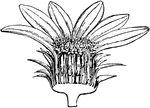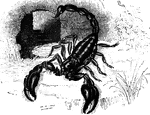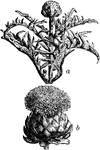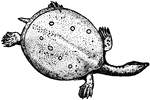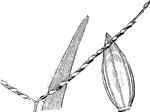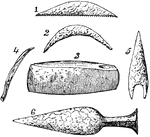
Stone Age Tools
"Implements of the Stone Age. 1, saw-edged flint knife; 2, crescent-shaped flint knife; 3, stone ax;…

Aigret
"A plume composed of feathers arranged in imitation of the feathers on the head of the heron, and worn…

Western Train
"A western emigrant train. The occupation of the west. With every year the line of settlements was pushed…
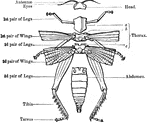
External Anatomy of an Insect Skeleton
"Anatomy of the external skeleton of an insect" — Goodrich, 1859
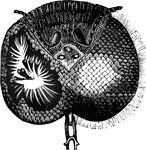
Eyes of a Bee
"The eyes, which are among the most wonderful objects in nature, are almost always of the kind called…

Digestive Apparatus of an Insect
"a, head, antennae, &c; b, pharynx; c, crop; d, gizzard; e, chyle-forming stomach; f, biliary vessels;…

Atlantic Cable
"Laying the Atlantic Cable. In 1866, a previous attempt in 1858 having failed, a telegraphic cable was…

Scarab Beetle
"The S. nasicornis is a European species, common in gardens, and is noted for a pair of curious…

Click Beetle
"The Elater striatus of Caenne, is an inch long, of a black color, and striped upon the back."…

Angelfish
"A plagiostomous fish. It is from 6 to 8 feet long, has a flat, roundish head, terminal mouth, and teerh…

Death's Head Moth
"The most remarkable species is the Death's Head Moth, Acherontia Atropos, a large kind,…

Flies
"In these the head is generally of considerable size, and is furnished with a pair of large, compressed…

Antlion and Larva
"In some species the larvae, which are small, sluggish, oval-shaped creatures, and furnished with a…

Boat Fly
"They carry the air required for their respiration in a space left for this purpose between the wings…
Filipino Bolo
"A Bolo is a short, broad, lance-shaped weapon; used by the Filiinos in their operations against the…

Filipino Bolo Sheath
"A Bolo is a short, broad, lance-shaped weapon; used by the Filiinos in their operations against the…
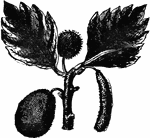
Breadfruit
"The breadfruit is a large, globular fruit of a pale-green color, about the size of a child's head,…

Human Brain
"The Brain is the encephalon, or center of the nervous system and the seat of consciousness and volition…

Breadfruit Fruit
"The breadfruit is a large, globular fruit of a pale-green color, about the size of a child's head,…
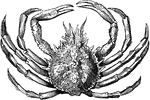
Spinous spider-crab
"In these the back is usually covered with spines and hairs. They generally live in deep water, and…
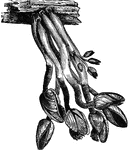
Barnacles
"The Common Barnacle, Lepas anatifera, perhaps the best-known example of the order, generally…

Lob-worm
"Errantia means wandering, and is applied to numerous species, of which the Lob-worm or Lug-worm,…
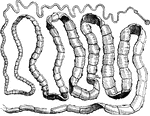
Tape-worm
"The body is composed of numerous joints or segments, each one resembling the others; these are often…
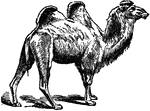
Camel
"Camel is a genus of ruminant quadrupeds, characterized by the absence of horns; a fissure in the upper…
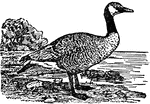
Canada Goose
"The Canada Goose is an American wild goose 30 to 35 inches long, brownish above, lighter below, head,…

Medusa's head pentacrinus
"This may be considered as one of the greatest wonders of nature, it being a real animal, having blood,…

Cephalopoda
"Cephalopoda is a class of mollusks, the highest in organization of the division of the animal kingdom.…

Head of Chameleon
"Chameleon is a genus of reptiles belonging to the Saurian or lizard-like order, a native of parts of…

Date Palm
"Date Palm is a genus of palms, the most important species of which is the common date palm, the palm…

Death's Head Moth
"The Death's-head Moth is the European Acherontia Atropos, a hawk-moth with markings on the thorax resembling…

Death's Head Moth Caterpillar
"The Death's-head Moth is the European Acherontia Atropos, a hawk-moth with markings on the thorax resembling…
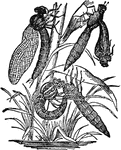
Dragonfly
"The Dragon Fly has a large, broad head, very freely attached to the thorax, and large, convex, prominent…

Erne
"The Erne is one of the 'bare-legged' eagles. The genus includes some seven species, represented apparently…

Tiger Head
"Felidæ or Felinæ is the cat tribe, a family of carnivorous quadrupeds, including the domestic…

Goosander
"The Goosander is a web-footed bird in the duck family. The adult male, which measures 26 inches in…
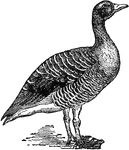
Wild Goose
"Goose is the name of a well-known family of natatorial birds. The domestic goose is believed to have…

Goosander
"The Goosander is a web-footed bird in the duck family. The adult male, which measures 26 inches in…
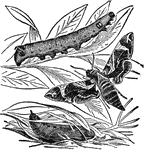
Hawk Moth
"Hawk Moth is a family of the lepidopterous insects, forming along with the clear winged moths and the…

Hedgehog
"Hedgehog is a quadruped distinguished by having the body covered with spines instead of hair. The skin…
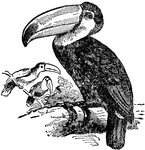
Toucan
"The Toucan, in ornithology, is the popular name of any bird of the genus Rhamphastos. They are all…
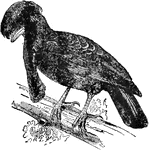
Umbrellabird
"The Umbrella Bird is a native of Peru. It is about the size of a crow, with deep black plumage; the…

Common Vipers
"Viper is a genus of venomous snakes. This family includes many important forms– e. g., the common…

Common Viper
"Viper is a genus of venomous snakes. This family includes many important forms– e. g., the common…
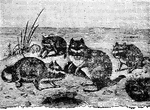
Viscacha
"Viscacha is a stout-built rodent, resembling a marmot, from 18 inches to two feet long, exclusive of…
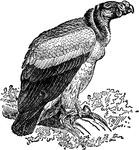
King Vulture
"A Vulture is any member of the family Vulturidæ included among the birds of prey. In all the…
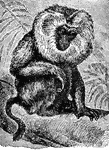
Wanderoo
"The Wanderoo, or Wanderu, is the Macacus silenus, from the S. of Hindustan, especially the country…

Wart Hog
"The Wart Hog closely resembles the true hogs in most of their characters, and particularly in their…
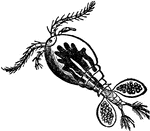
Cyclops communis Water Flea
"Water Flea is a popular name for minute aquatic Crustaceans such as daphnia, cypris, and cyclops. In…
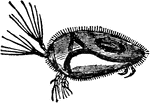
Cypris Unifasciata Water Flea
"Water Flea is a popular name for minute aquatic Crustaceans such as daphnia, cypris, and cyclops. In…

Daphnia Pulex Water Flea
"Water Flea is a popular name for minute aquatic Crustaceans such as daphnia, cypris, and cyclops. The…
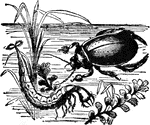
Water Beetle
"Water Beetles are beetles which live on or in the water. The Dytiscus, common in stagnant water, is…

Whale
"Whale is a name that may be taken as equivalent to Cetacean, and applied to any member of that order…
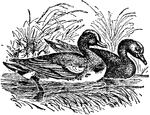
Wigeon
"Wigeon is one of the most popular birds with the American sportsman. Length about eighteen inches;…

